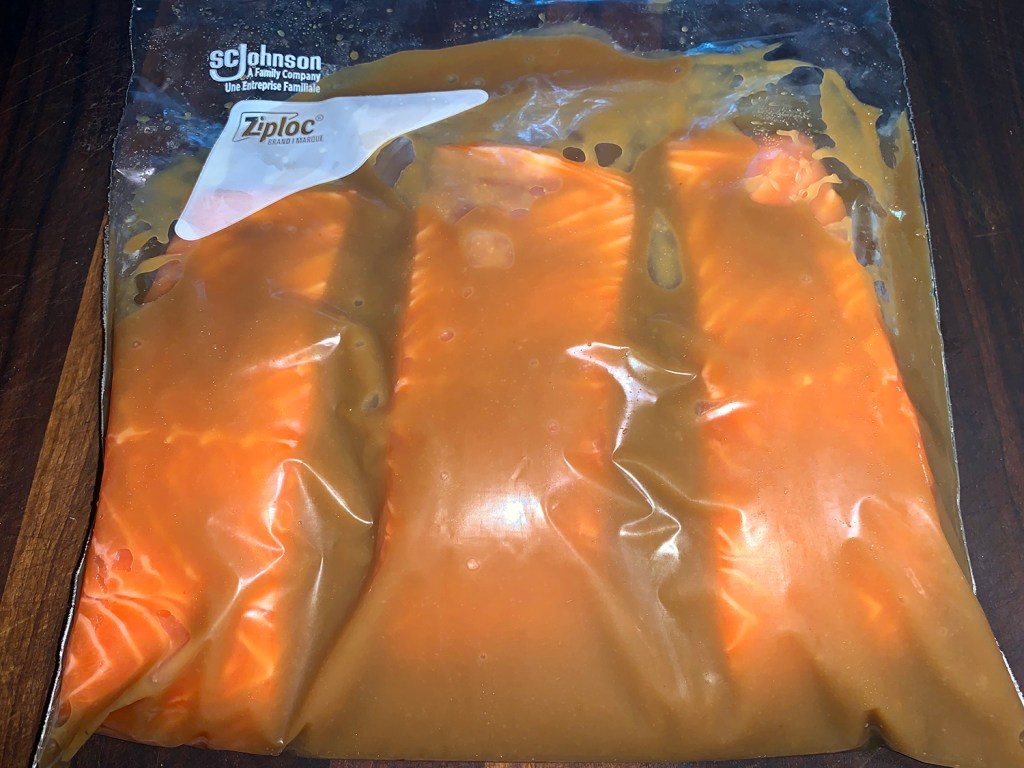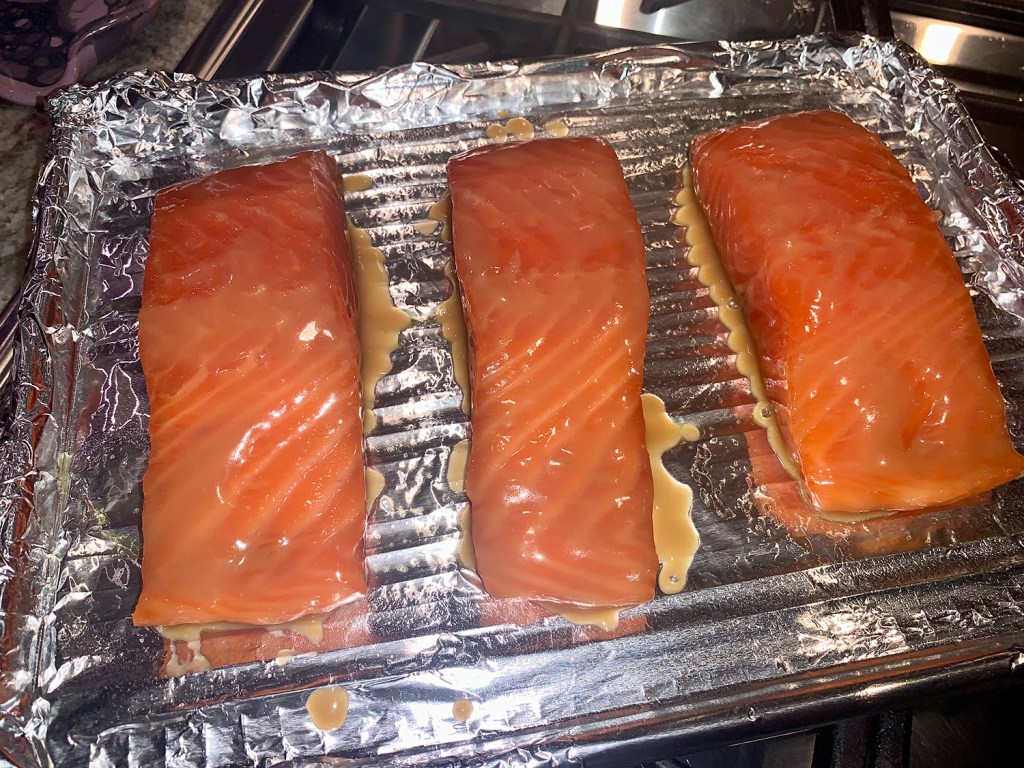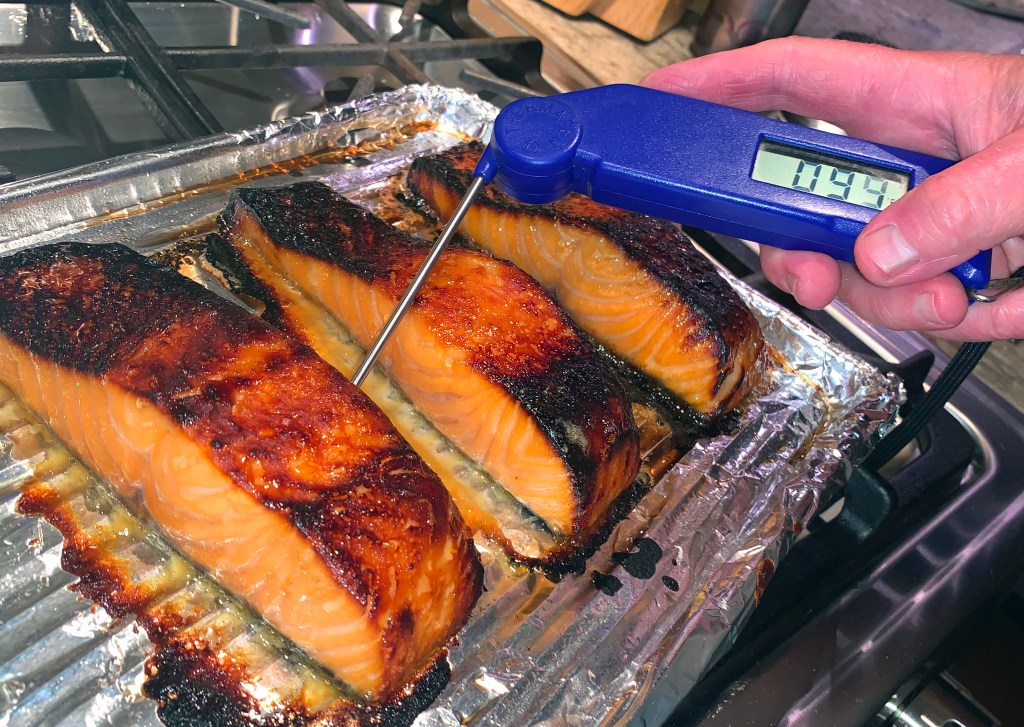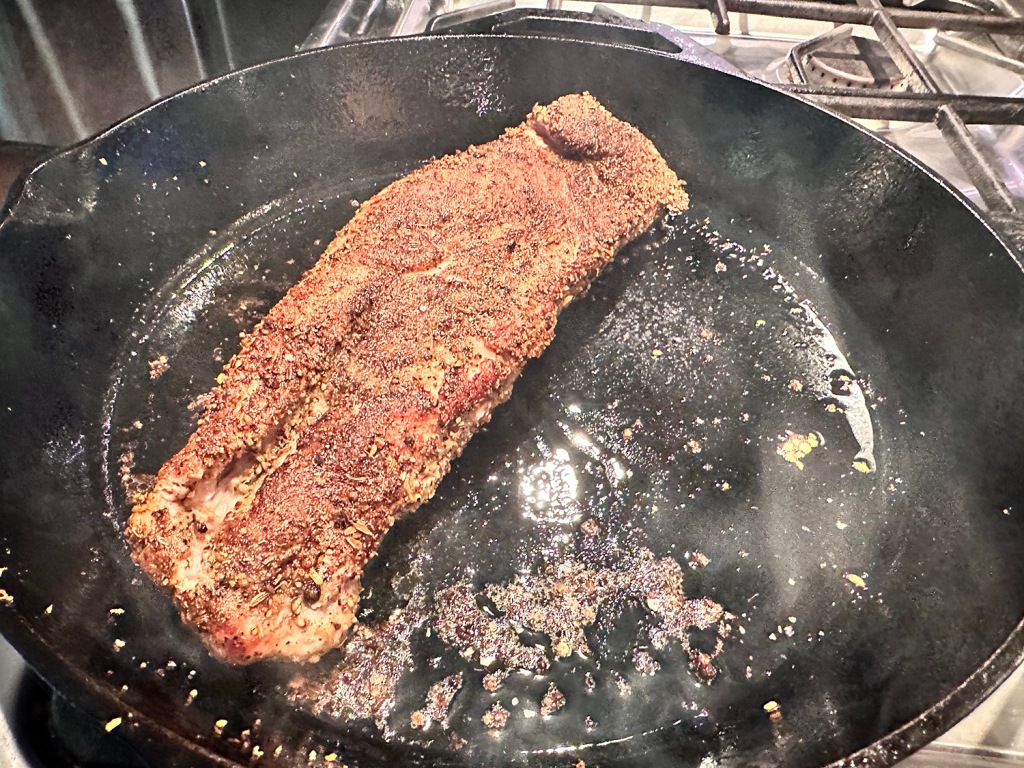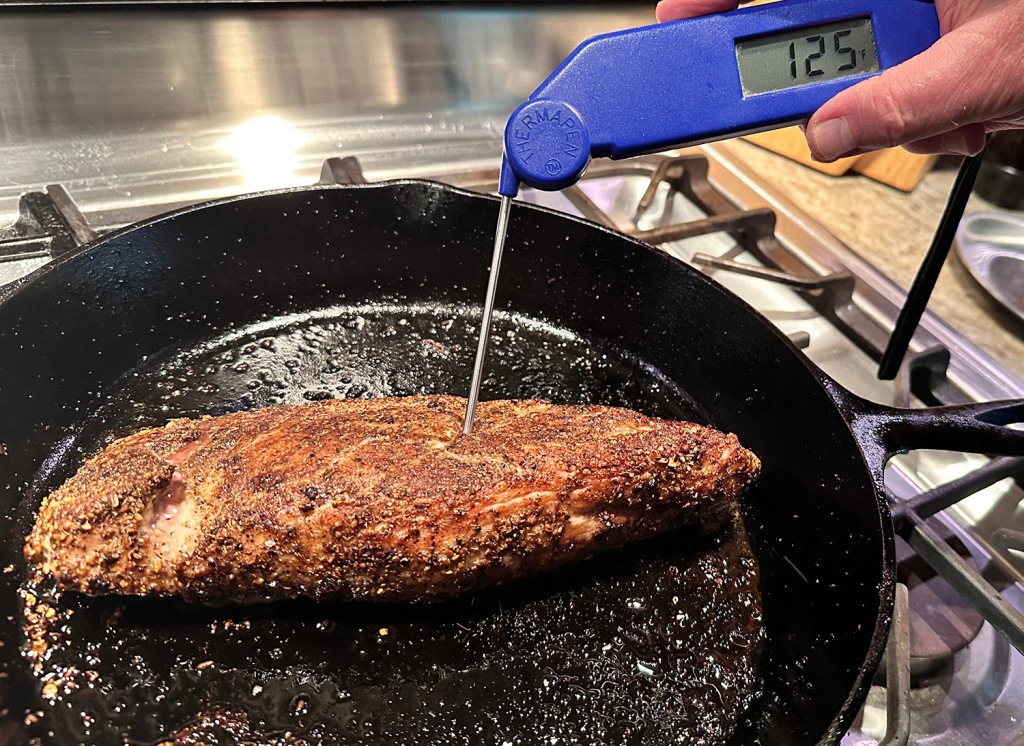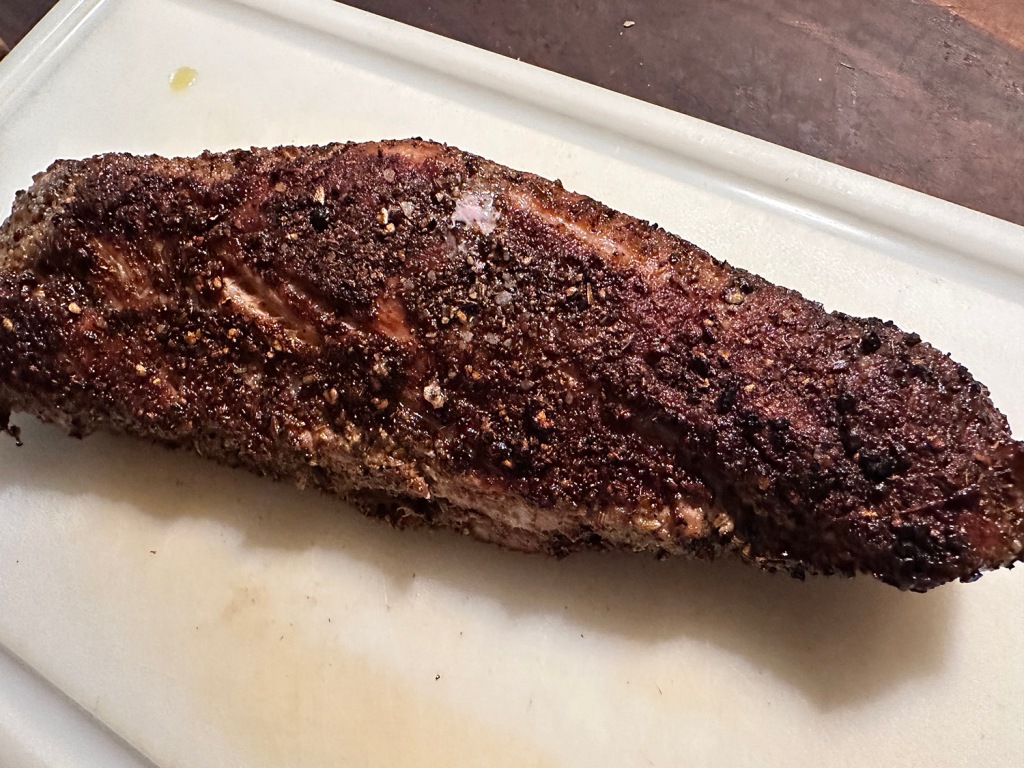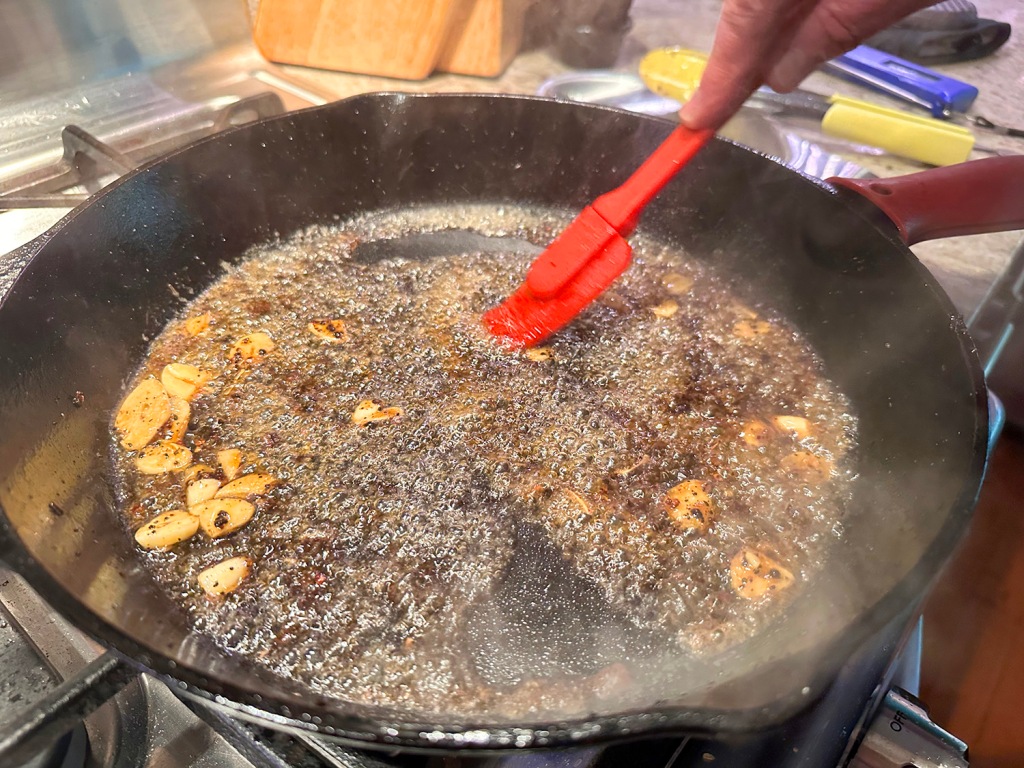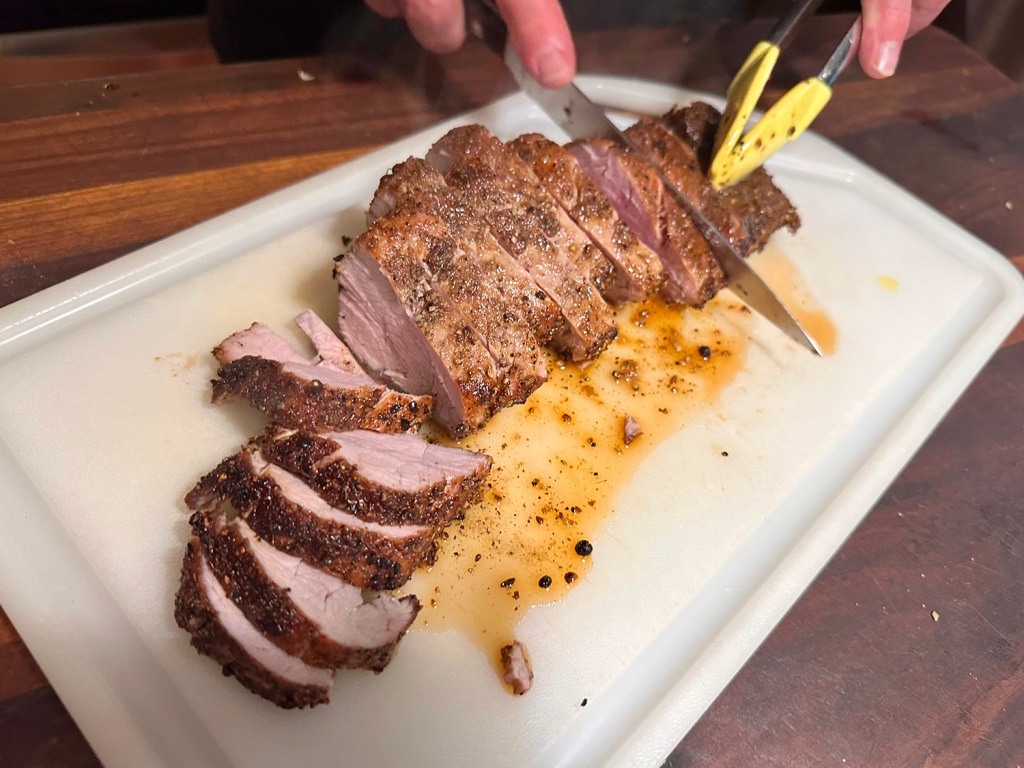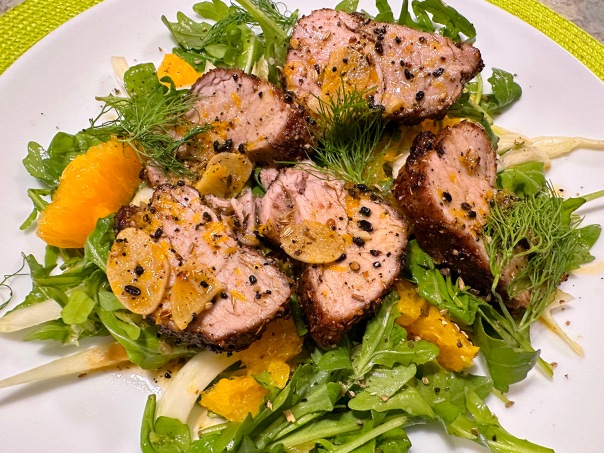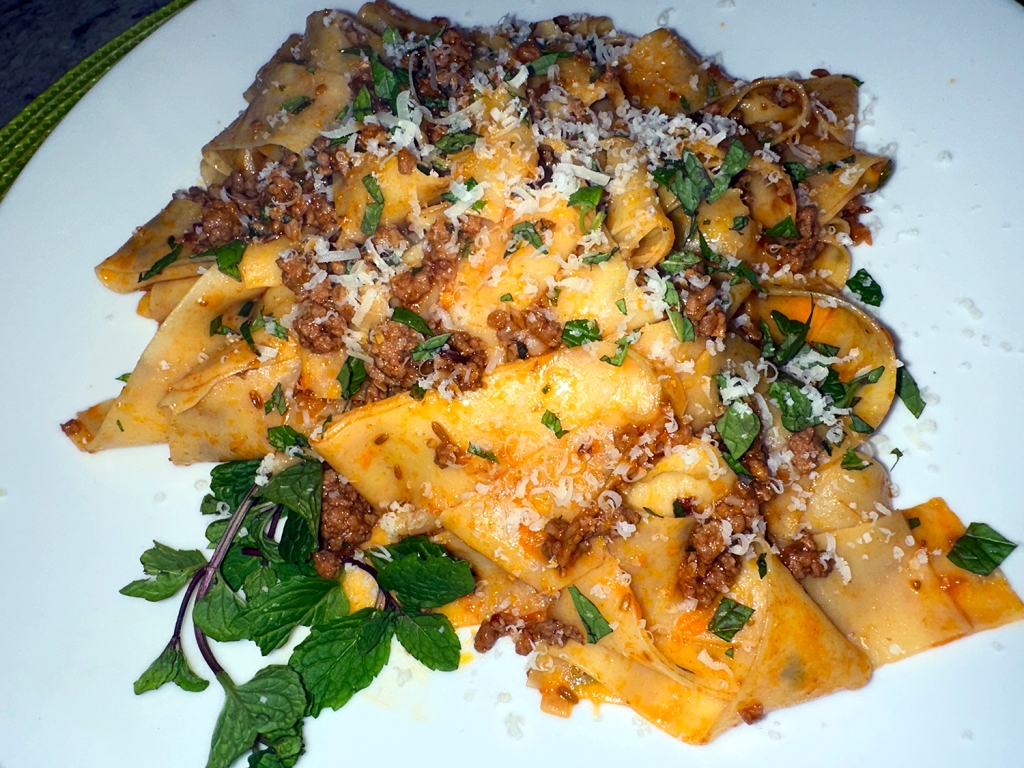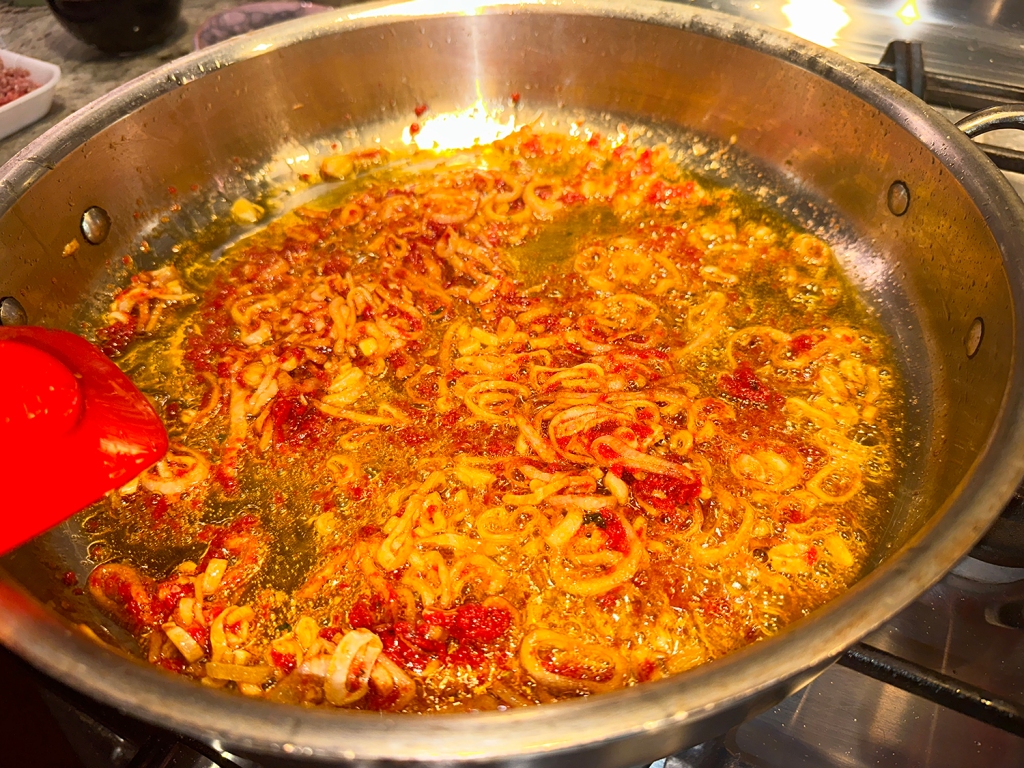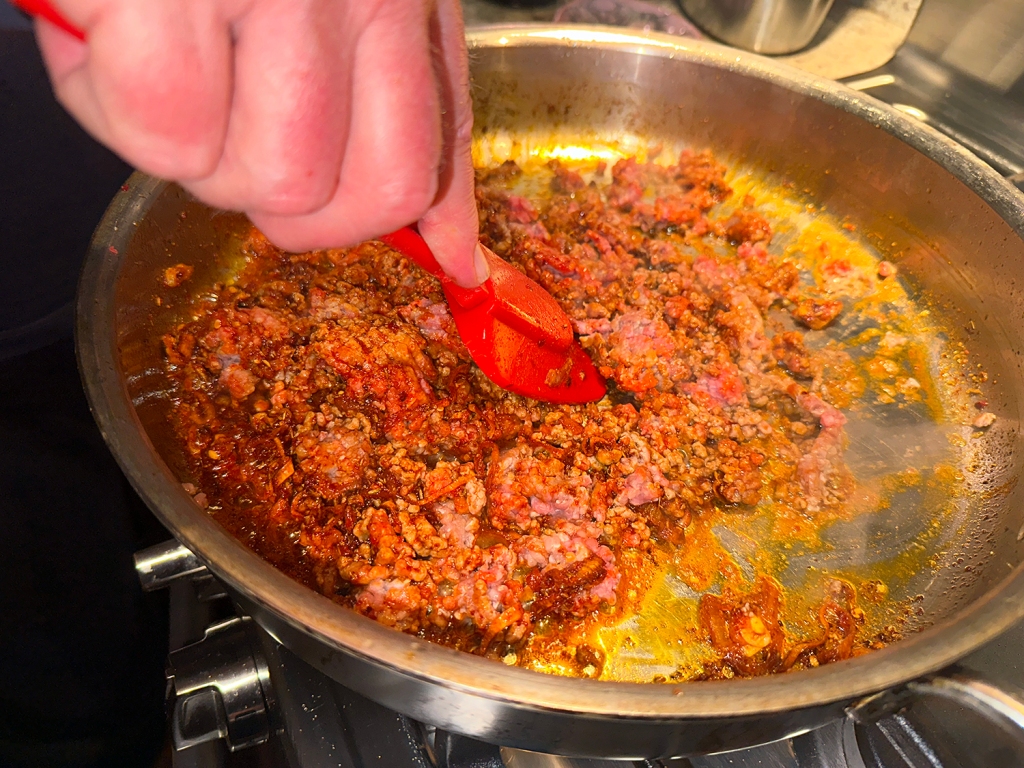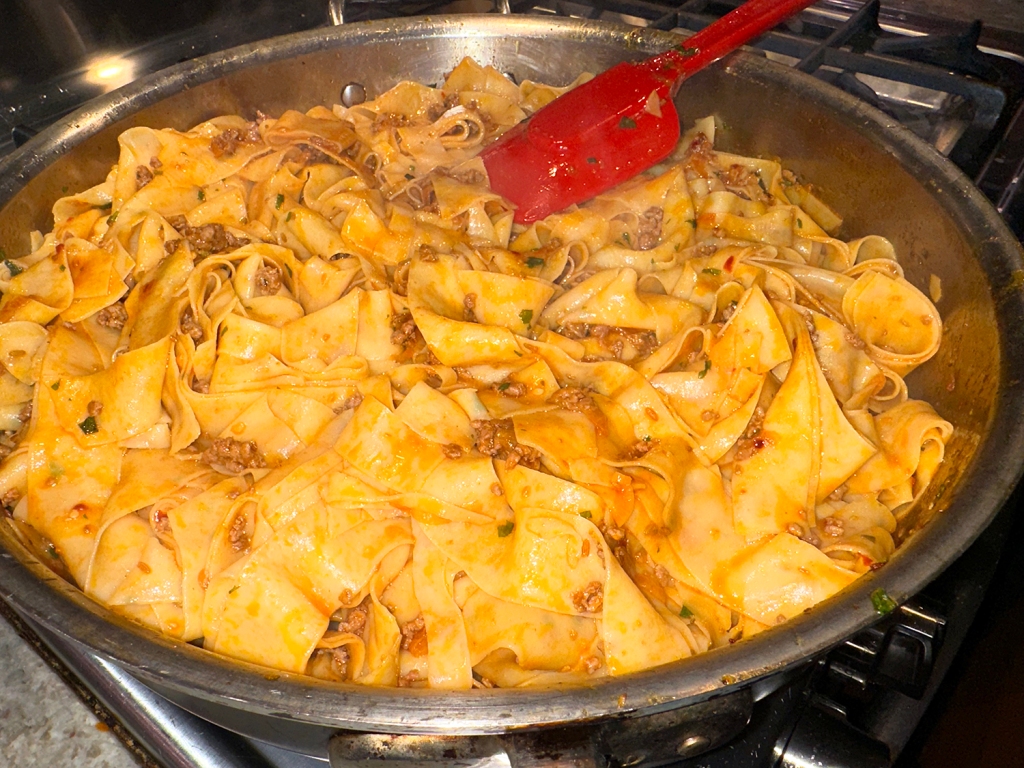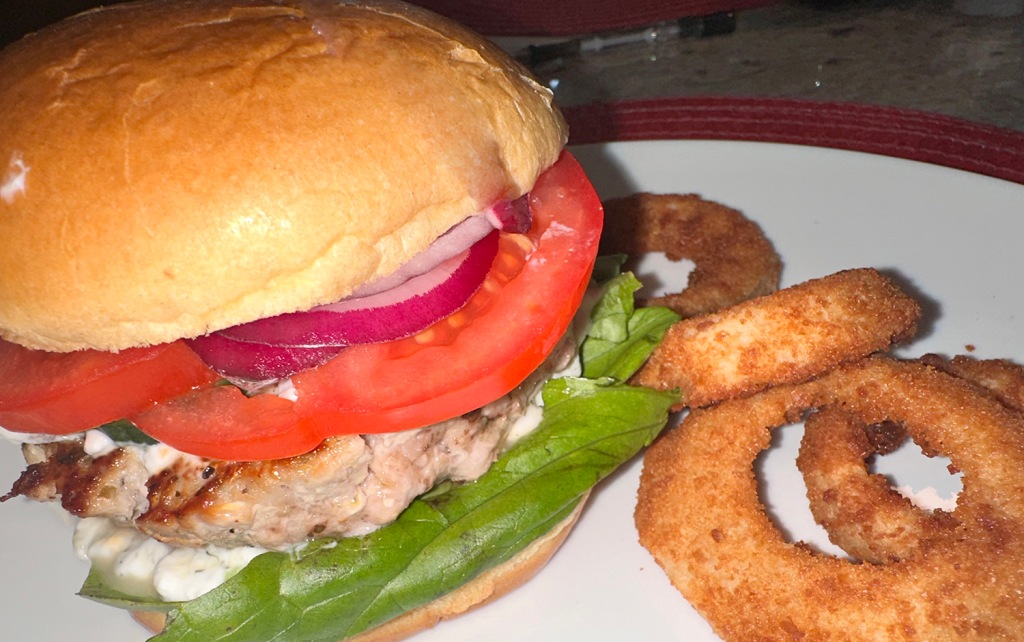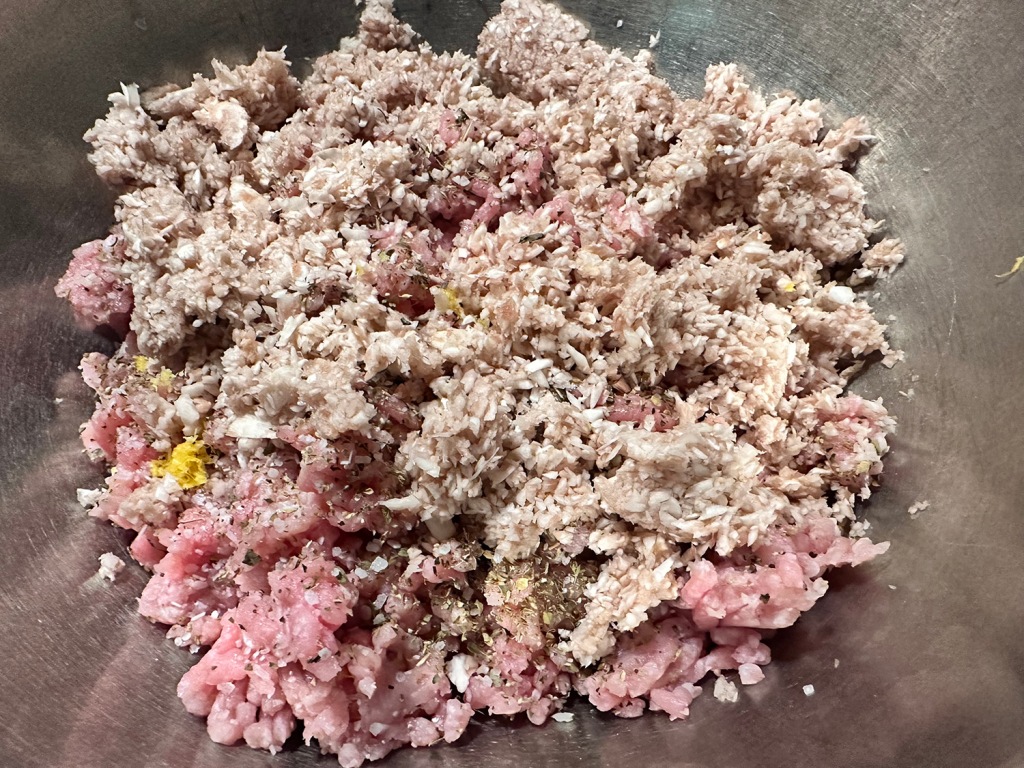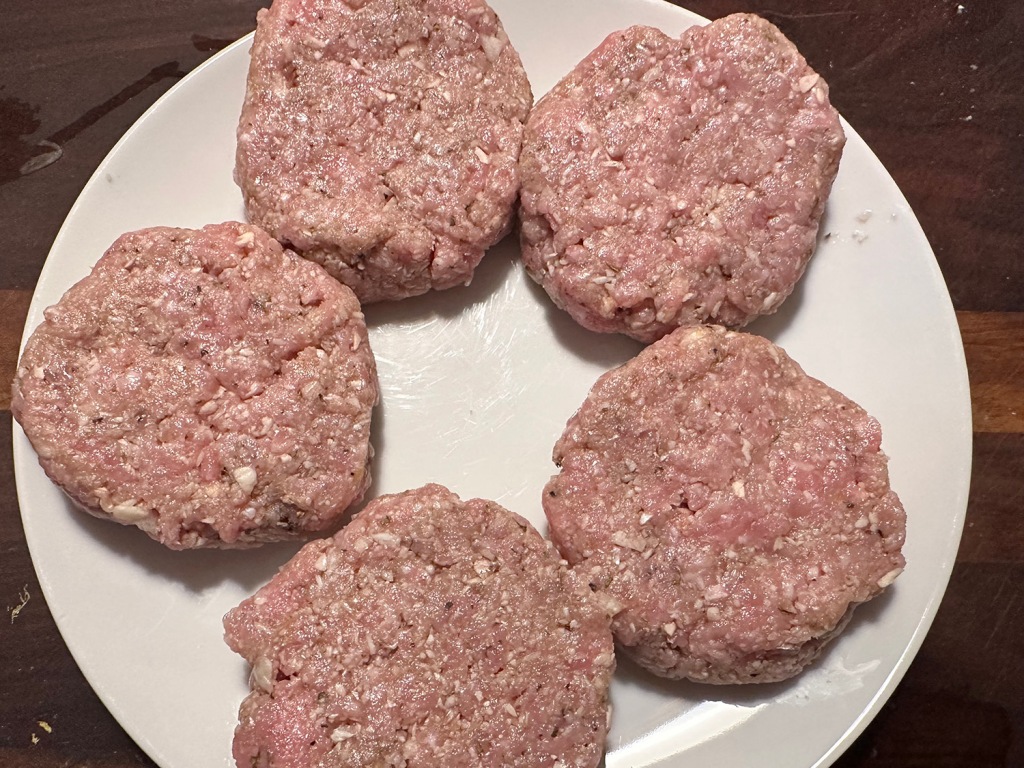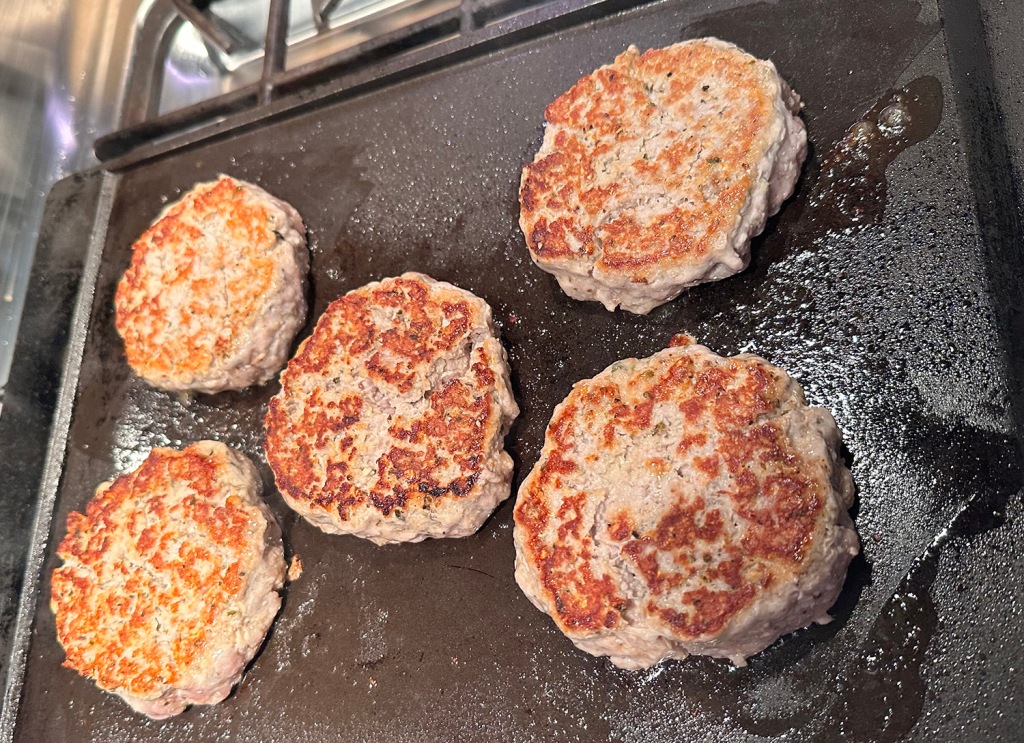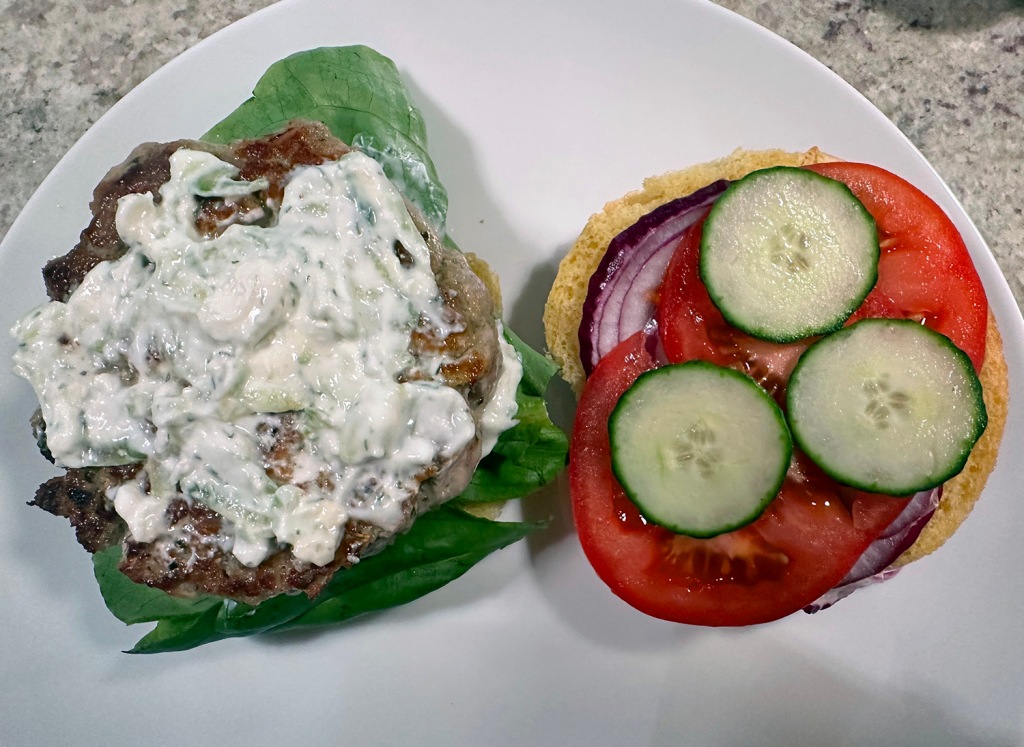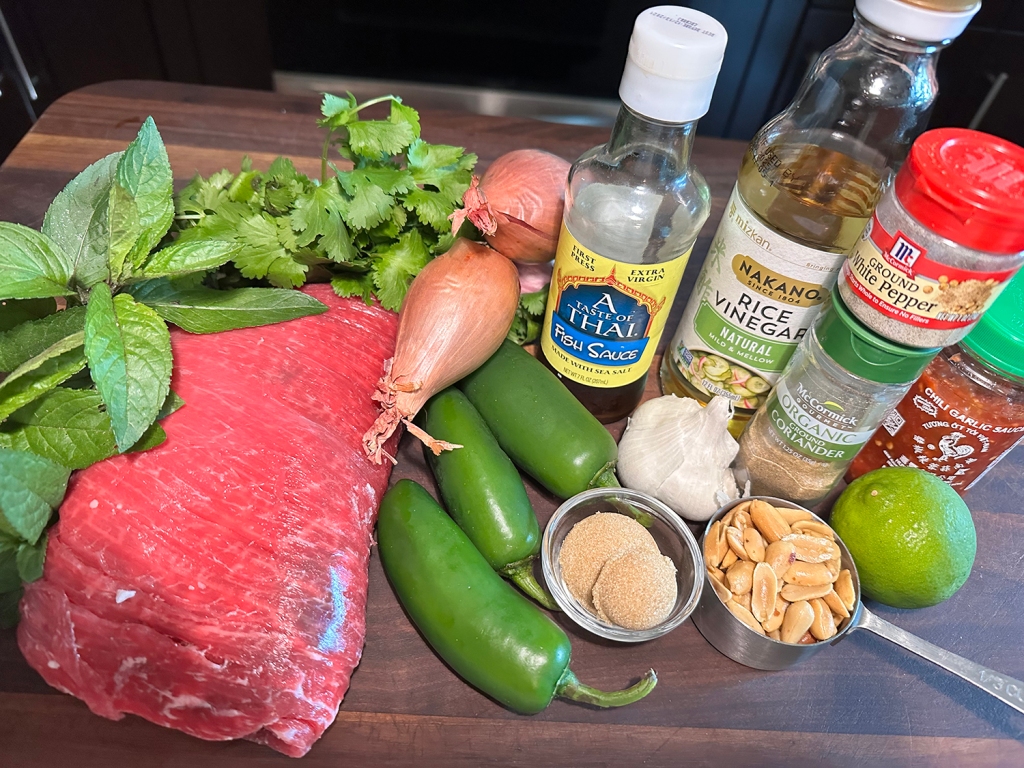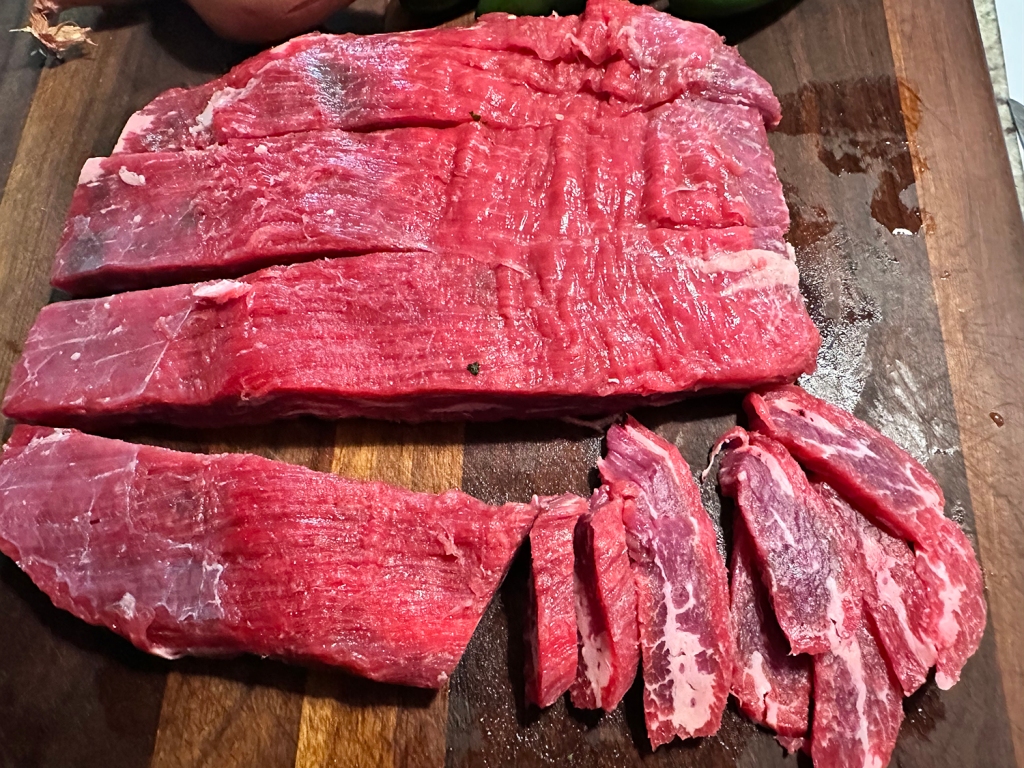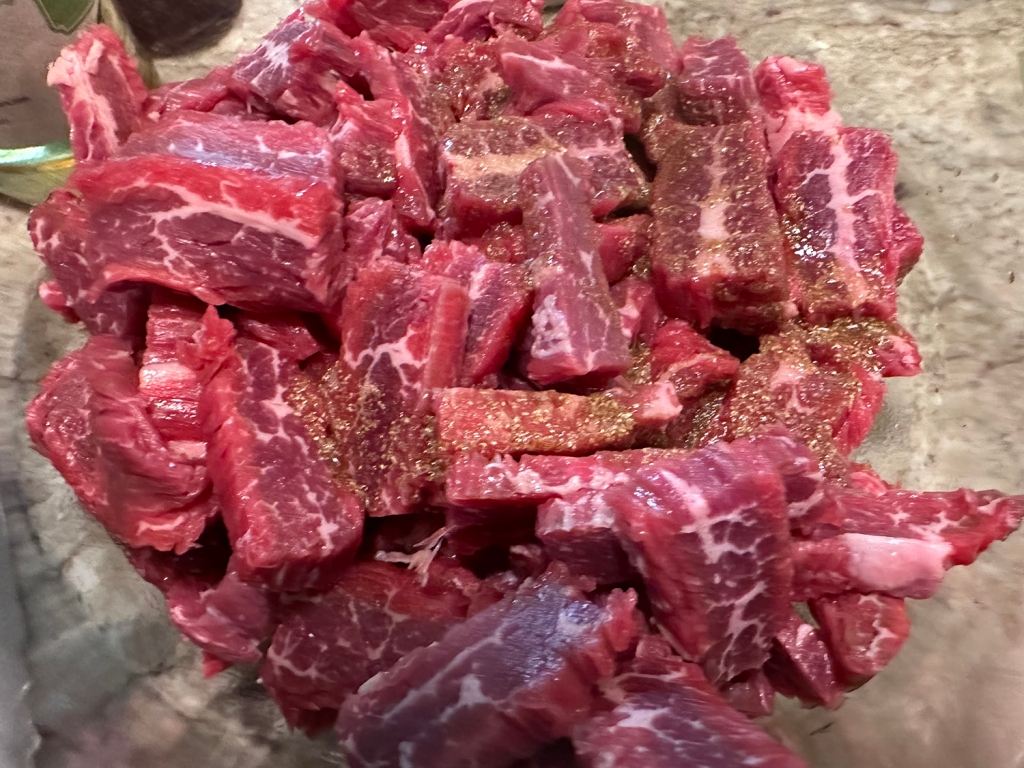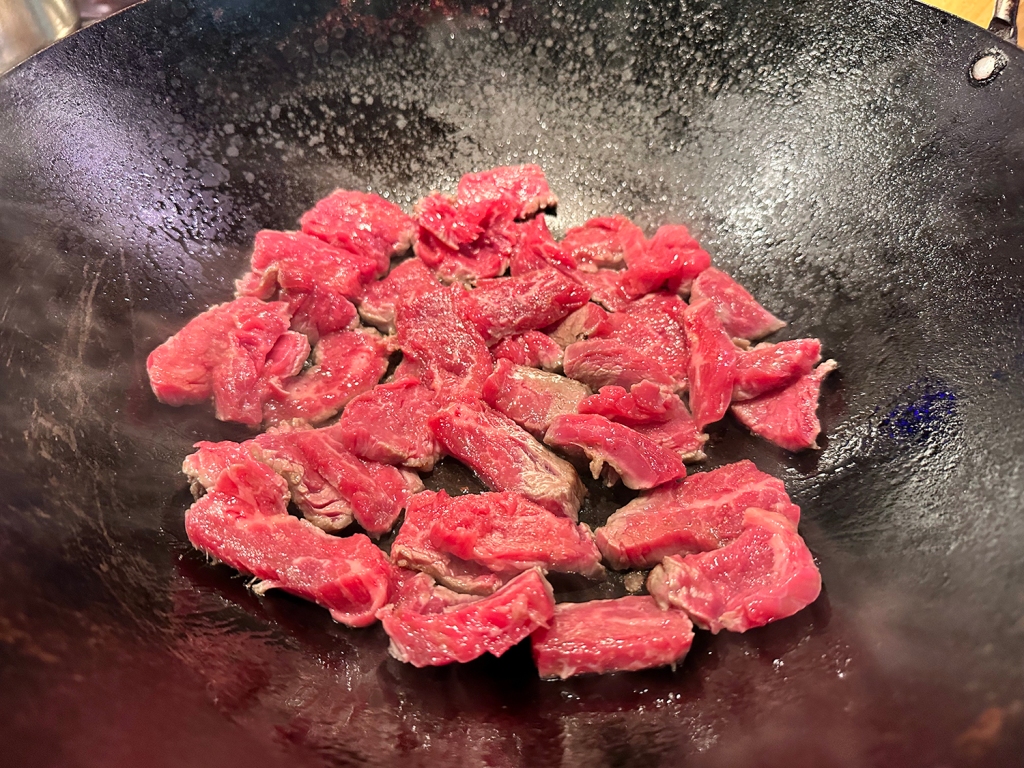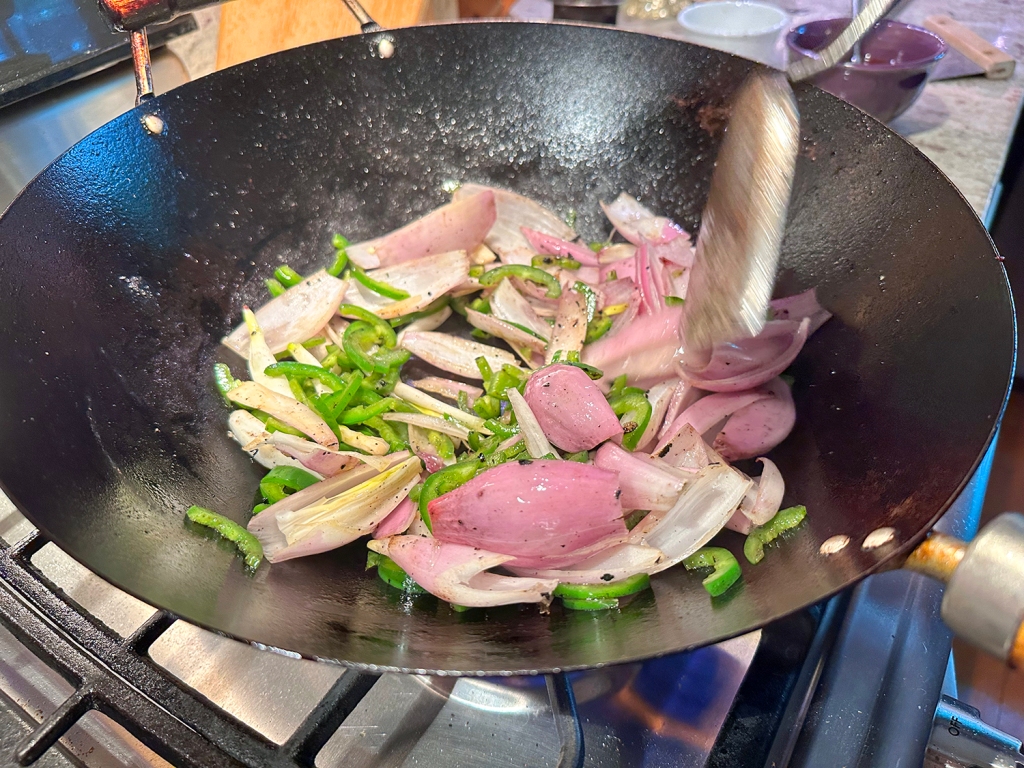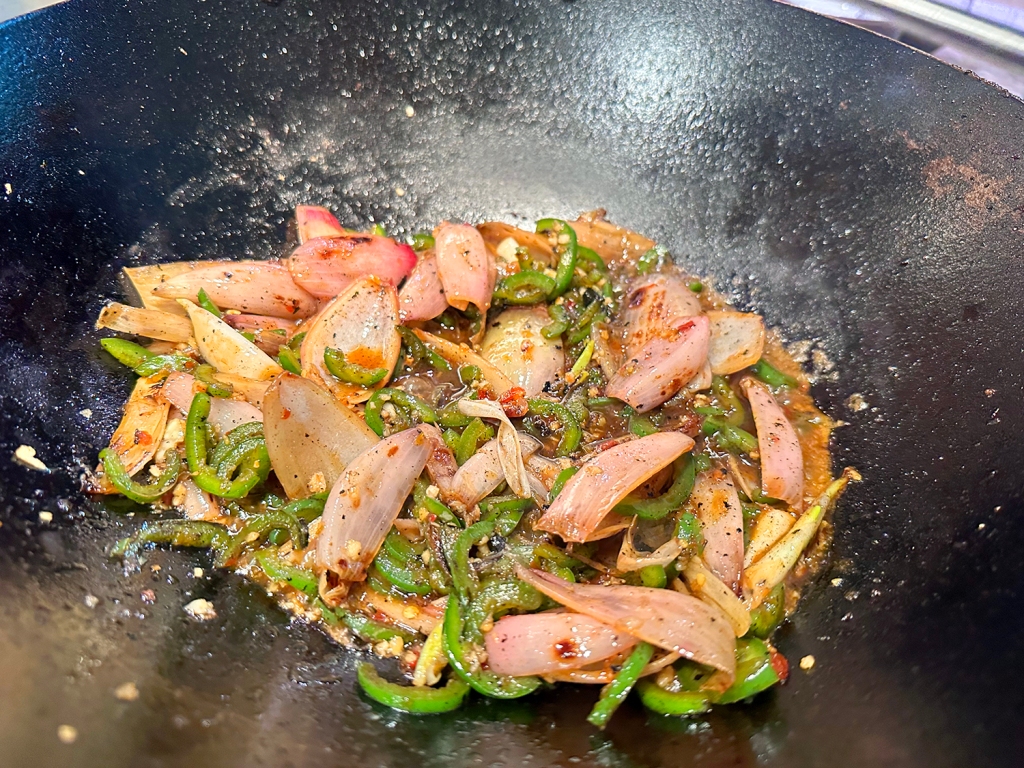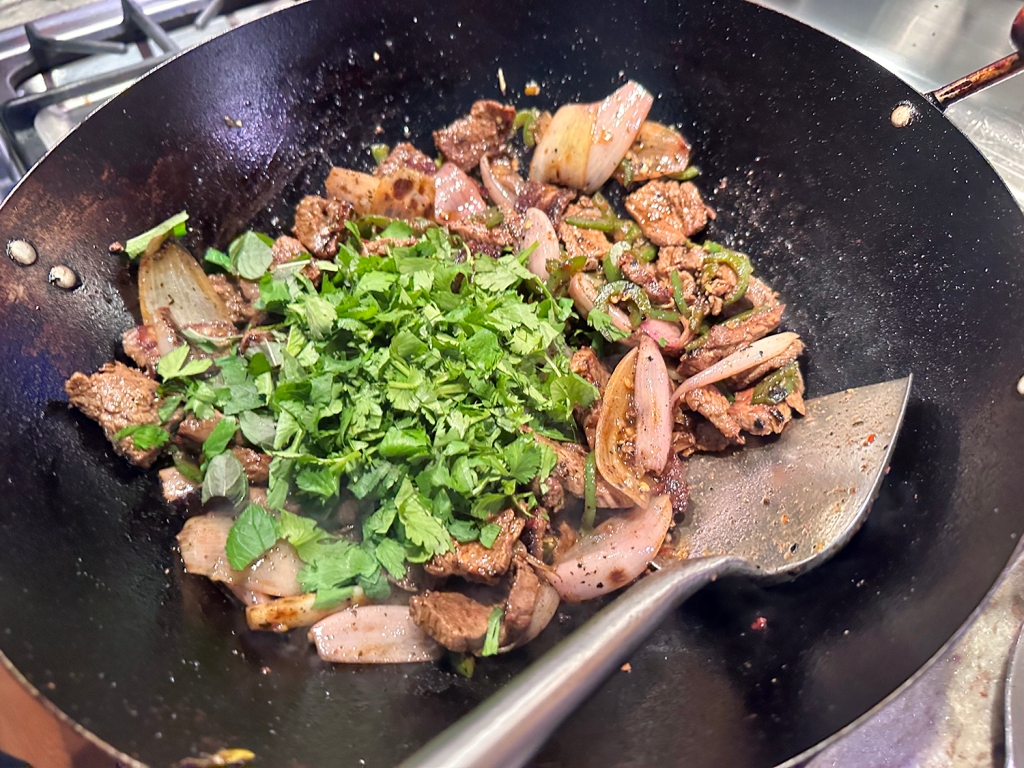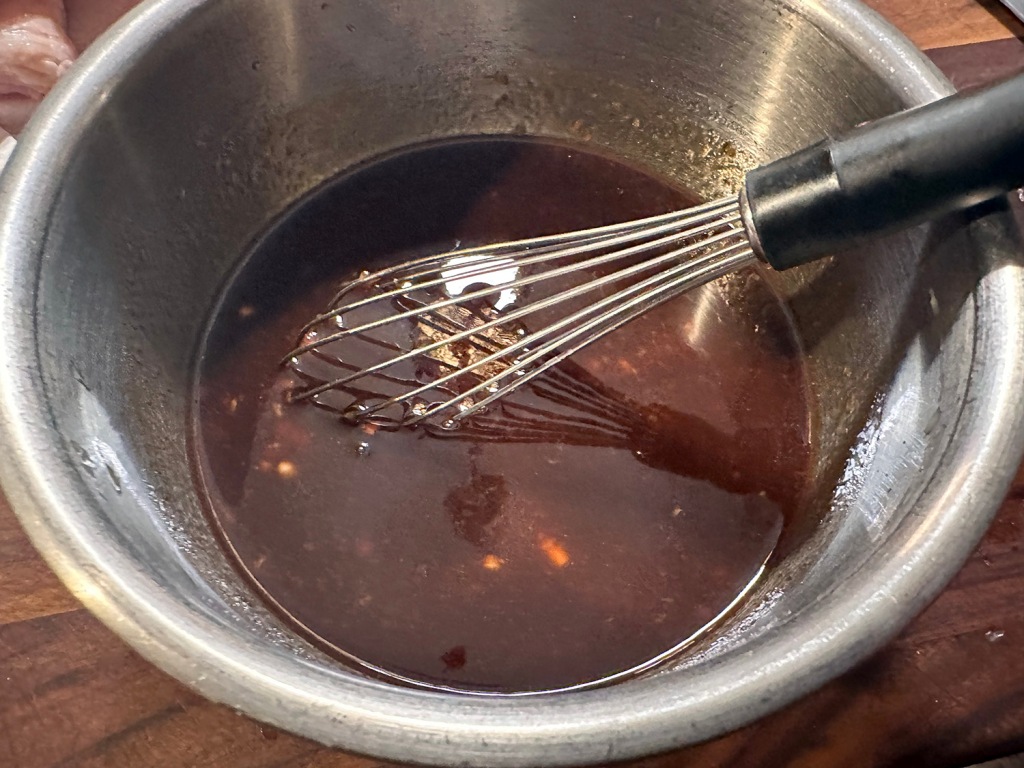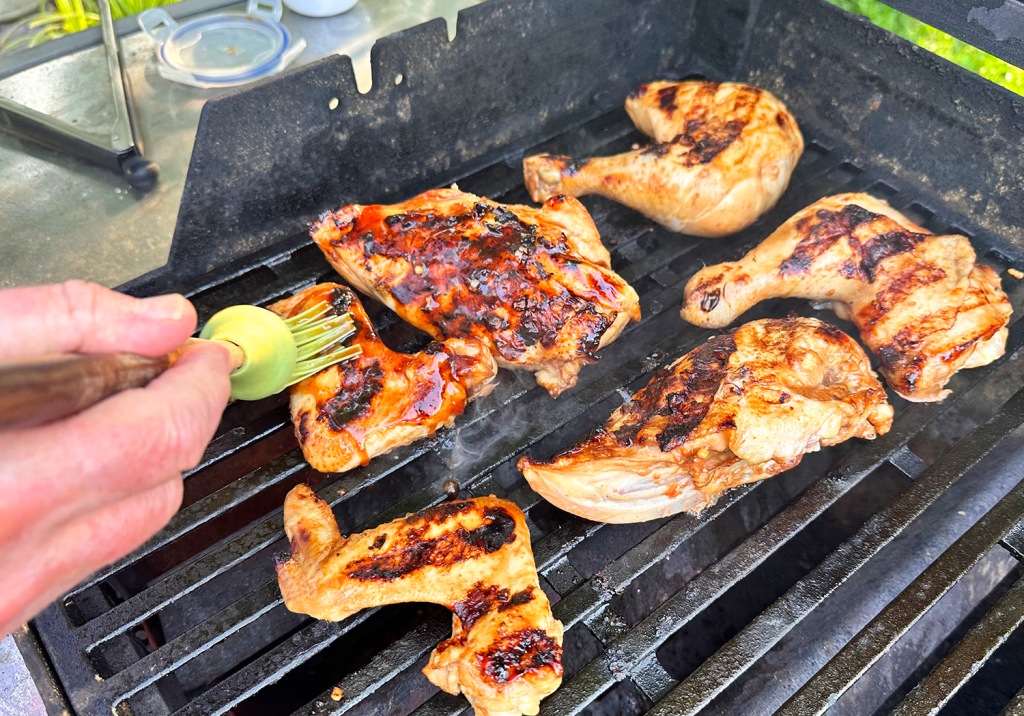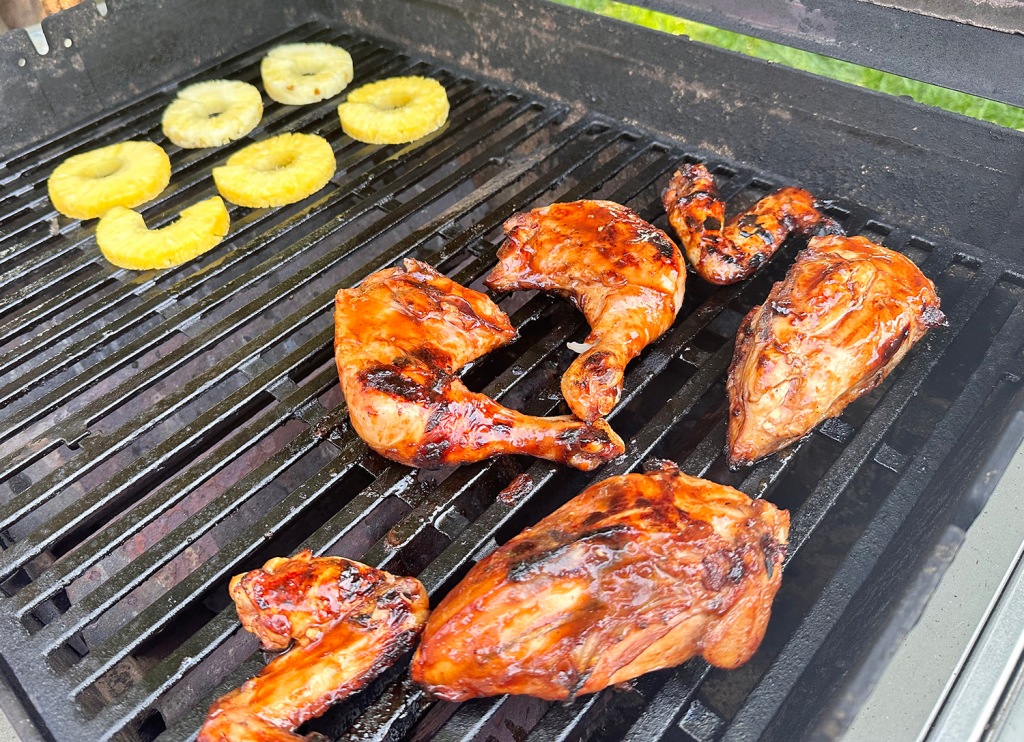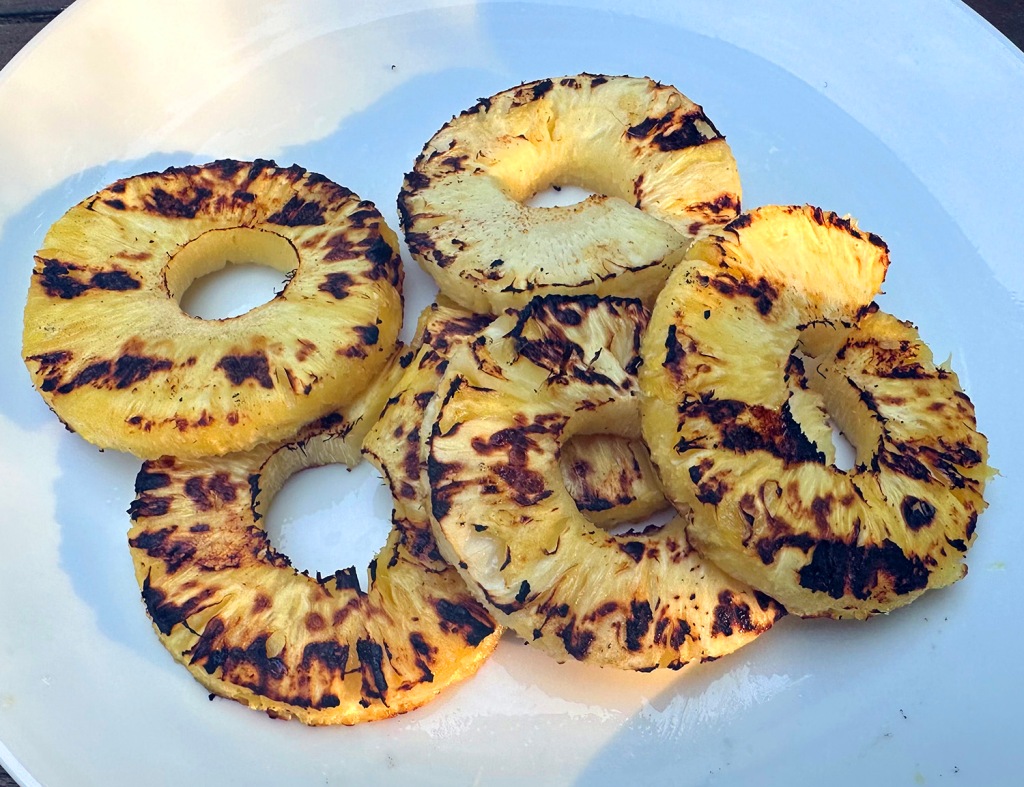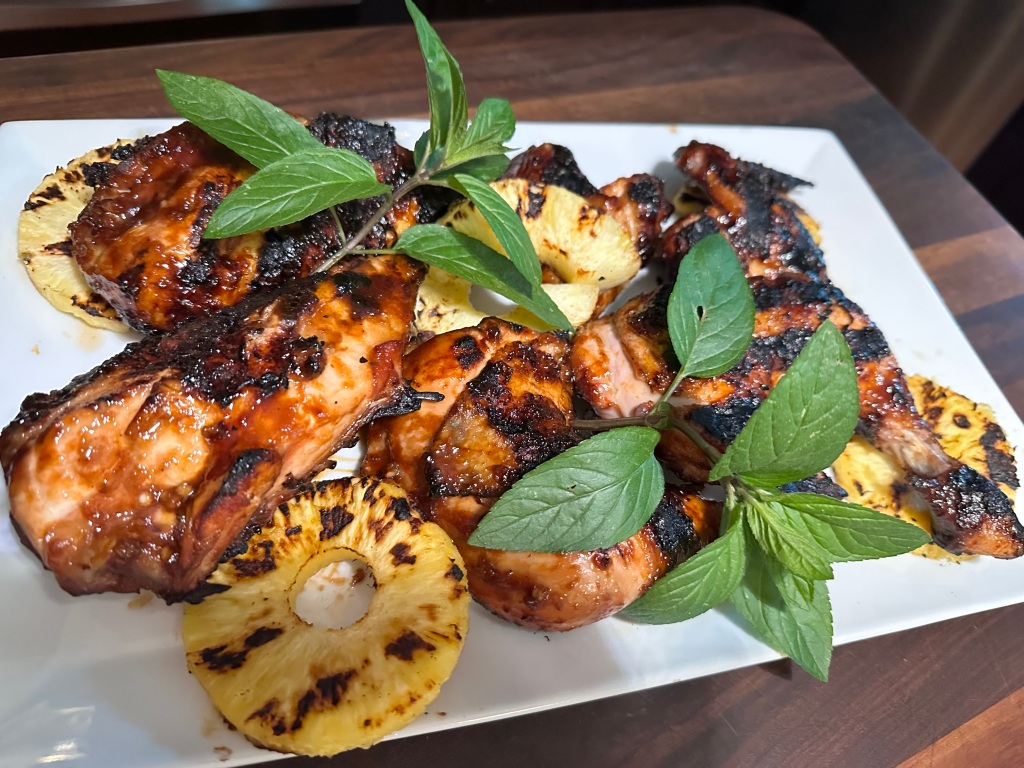By mid- to late-summer, many home gardeners (or farm stands) will have ample tomatoes and zucchini, so this tasty recipe will assist in using up some of that seasonal bounty. It’s a wonderful meatless dish that can be served as a side or as an entrée with a side salad.
The original recipe by Martha Shulman looked very appetizing, however, we felt a number of alterations could improve the outcome. Roasting, rather than frying the zucchini, allows you to cut down on olive oil and time. With small zucchini under 8 inches long, there is no need to cut them in half crosswise; simply slice them into 1/4″ strips using a mandoline if you have one.
Two sheet pans are oiled with Pam Olive Oil spray instead of lining them with parchment (which many reviewers claimed left the zucchini too watery). After roasting the zucchini, layer the cooled planks between paper towels, and refrigerate until ready to assemble. This helps eliminate any extra moisture. Do this step the day before or that morning, which will save time when you are ready to prep.

Of course, while using fresh tomatoes is preferred, another time saver is to use canned whole tomatoes instead. Crush them with your hands, then follow the directions for making the sauce. For a heftier meal, amp up the dish with 8 ounces of shredded mozzarella, sprinkling between each set of layers with some on top. A small amount of sugar (1⁄8 tsp.) was in the recipe, but we did not include any.
It will serve 4-6 as an entrée, or 8-10 as a side. Fabulous as leftovers too… eaten at room temperature, or reheated.
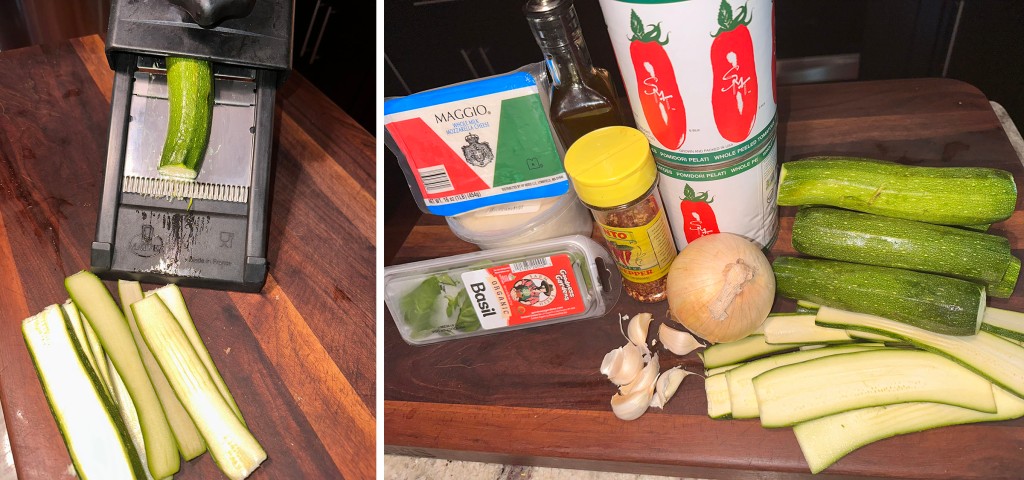
Zucchini Parmesan
Ingredients
For the Tomato Sauce
- 2 to 2½ lbs. fresh ripe tomatoes; OR 2, 28-ounce cans of whole tomatoes, hand crushed
- 1 Tbsp. extra-virgin olive oil
- 1 small onion, chopped
- 6 garlic cloves (more or less to taste), roughly chopped
- Salt and pepper
- 3 Tbsp. chopped fresh basil, divided
For the Zucchini Parmesan
- 2 to 2¼ lbs. zucchini
- Salt and pepper
- 3 Tbsp. extra-virgin olive oil, divided
- ½ to 1 tsp. red pepper flakes, to taste
- ¾ cup freshly grated Parmesan
- 8 oz. shredded mozzarella




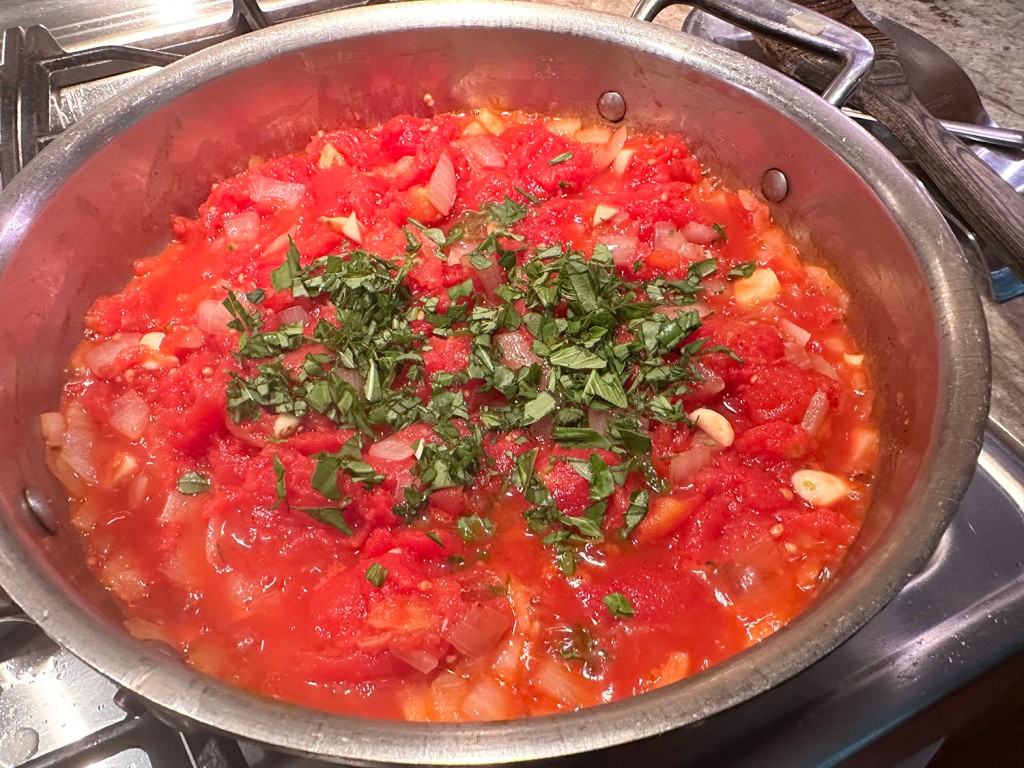




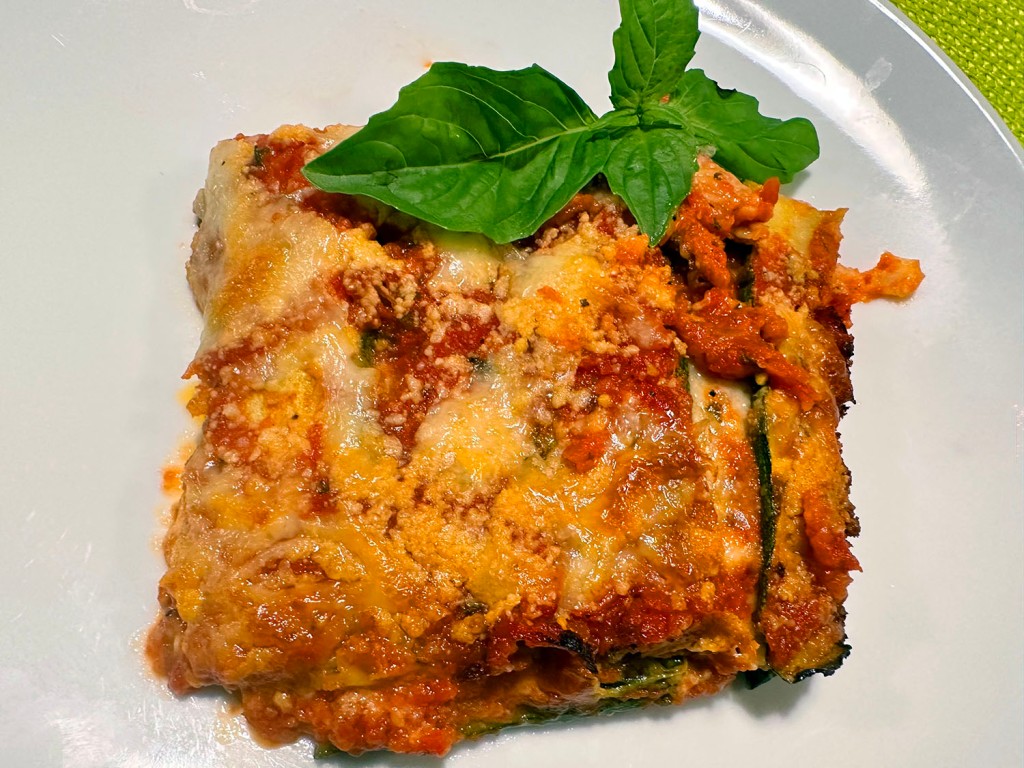
Directions
- If you have a food mill, quarter tomatoes. If not, peel, seed and chop them. OR, use canned whole tomatoes and drain the juices saving for another purpose. Crush tomatoes with hands.
- To make tomato sauce, heat 1 tablespoon olive oil in a large, heavy skillet over medium heat and add onion. Cook, stirring often, until tender, about 5 minutes.
- Add garlic. Cook, stirring, until fragrant, 30 seconds to a minute, and add crushed tomatoes, salt, pepper, and 2 tablespoons of chopped basil. Increase heat to medium-high. When tomatoes are bubbling briskly, stir and reduce heat to medium. Cook, stirring often, until tomatoes have cooked down and are beginning to stick to pan, 15 to 25 minutes, depending on consistency. Taste and adjust seasoning.
- Heat oven to 450 degrees. Spray 2 sheet pans with olive oil. Trim ends off zucchini and cut in half crosswise if larger than 8 inches long, then cut into lengthwise slices, about ¼ to ⅓ inch thick (a mandoline comes in handy for this step).
- Season on both sides with salt and pepper and toss with 2 tablespoons olive oil. Arrange zucchini slices on baking sheets in one layer and sprinkle with red pepper flakes. Roast for 12 minutes, until lightly browned and easily pierced with a knife. Remove from oven and reduce heat to 375 degrees.
- If using a food mill, put sauce through medium blade. If not, pulse sauce in a food processor fitted with steel blade until just coarsely puréed. (Or use an immersion blender.) Stir in remaining chopped basil.
- To assemble the dish, oil a 2-quart gratin pan with olive oil. Spread ¼ cup tomato sauce over bottom of dish. Arrange a third of the zucchini in an even layer over tomato sauce. Spoon a third of remaining sauce over zucchini, sprinkle with ¼ cup Parmesan, and add 1⁄3 of mozzarella. Repeat with 2 more layers, ending with ¼ cup Parmesan and remaining mozzarella. Drizzle on remaining tablespoon olive oil.
- Bake 30 to 35 minutes, until bubbling and browned on the top and edges. Remove from heat and allow to sit for 10 minutes before serving.
Loosely adapted from a recipe by Martha Shulman for NYTimes Cooking




